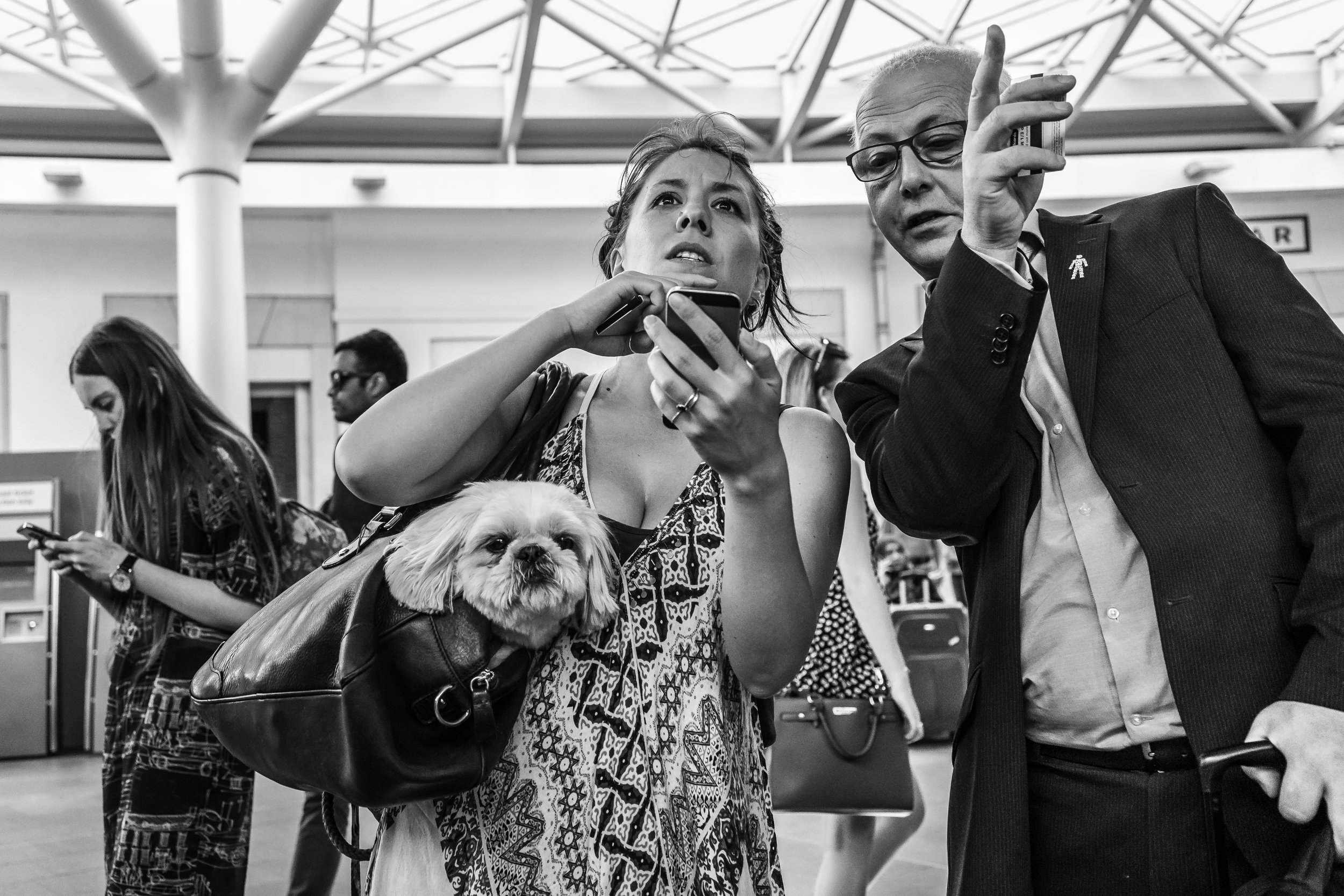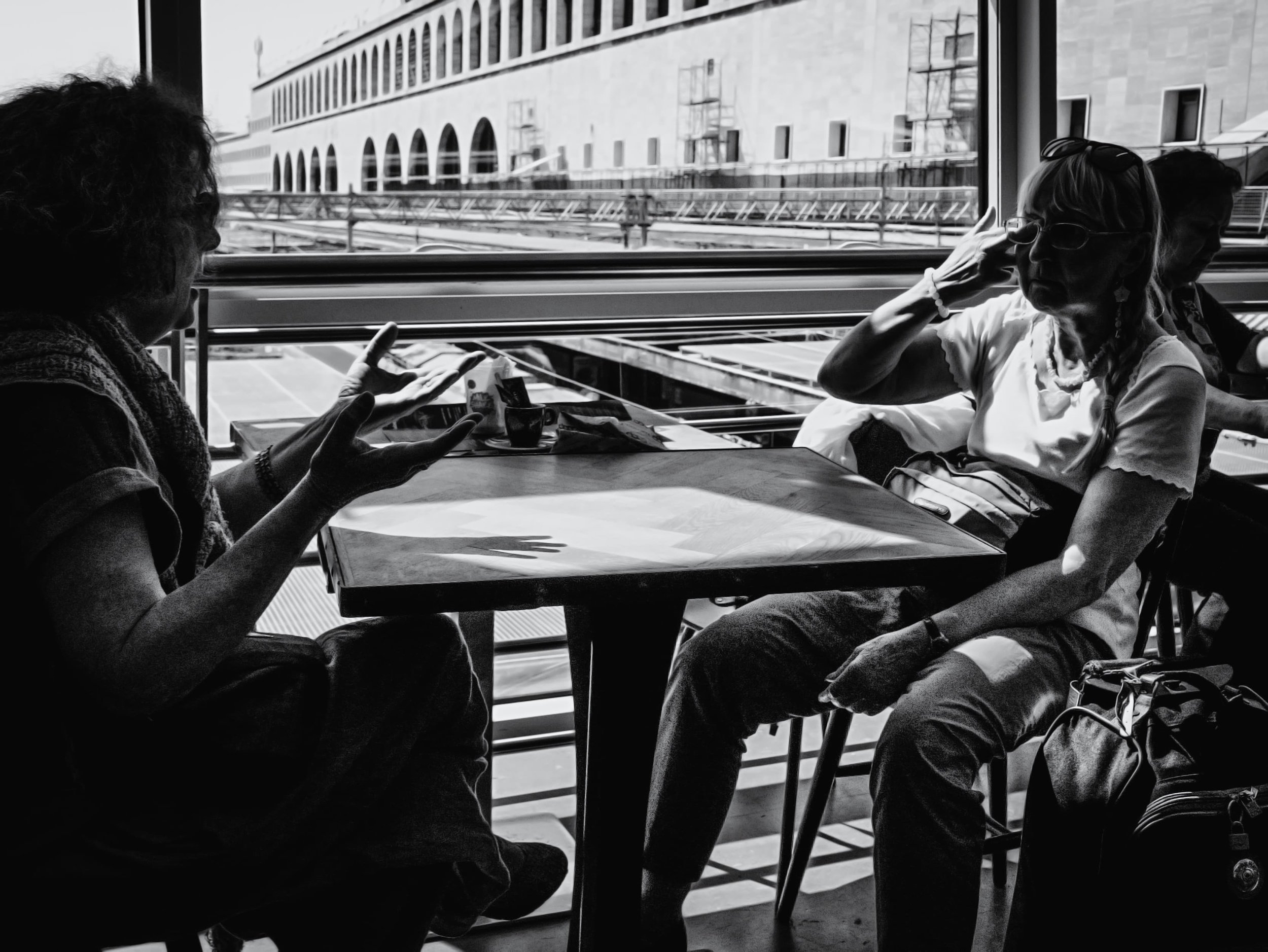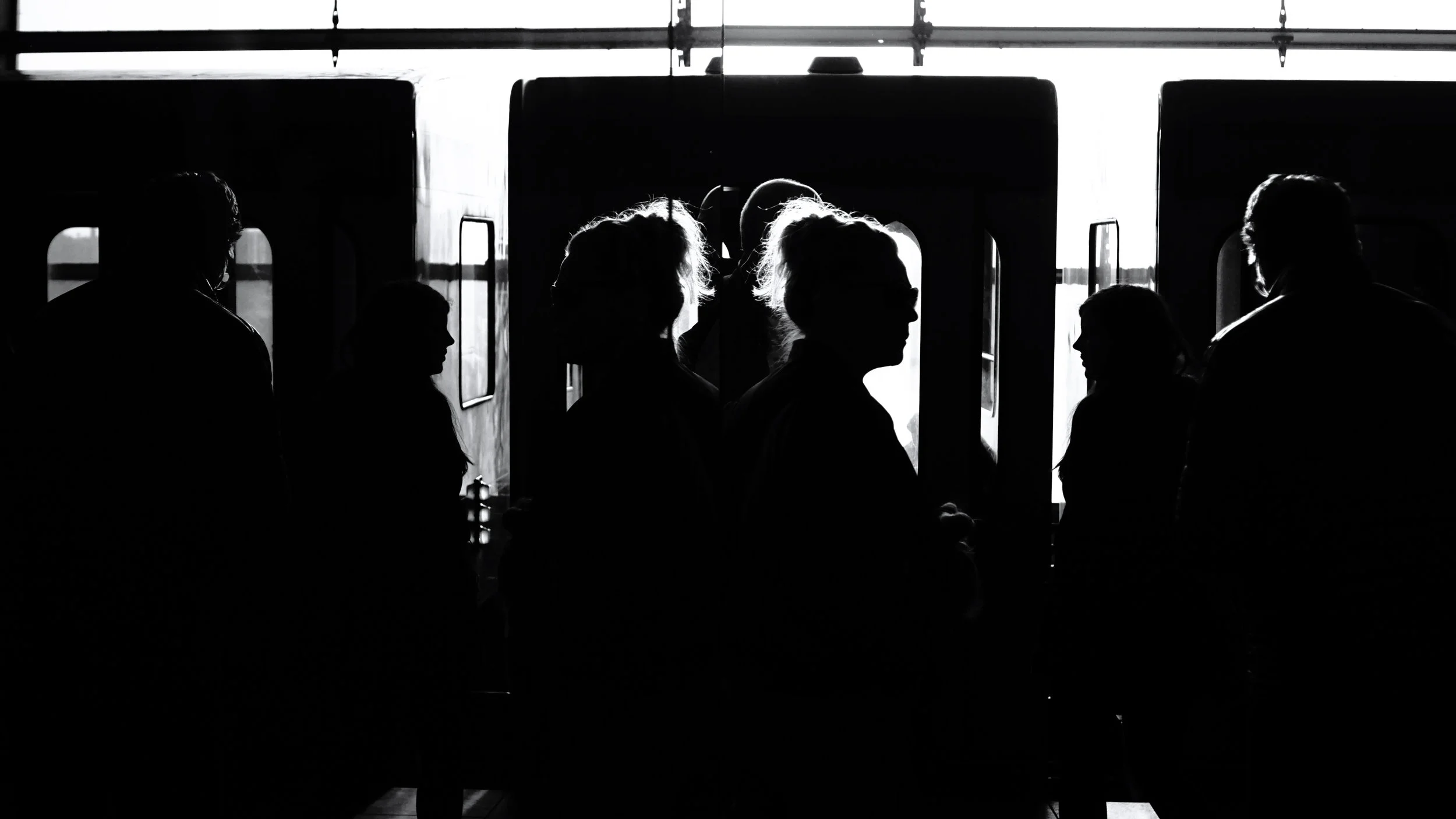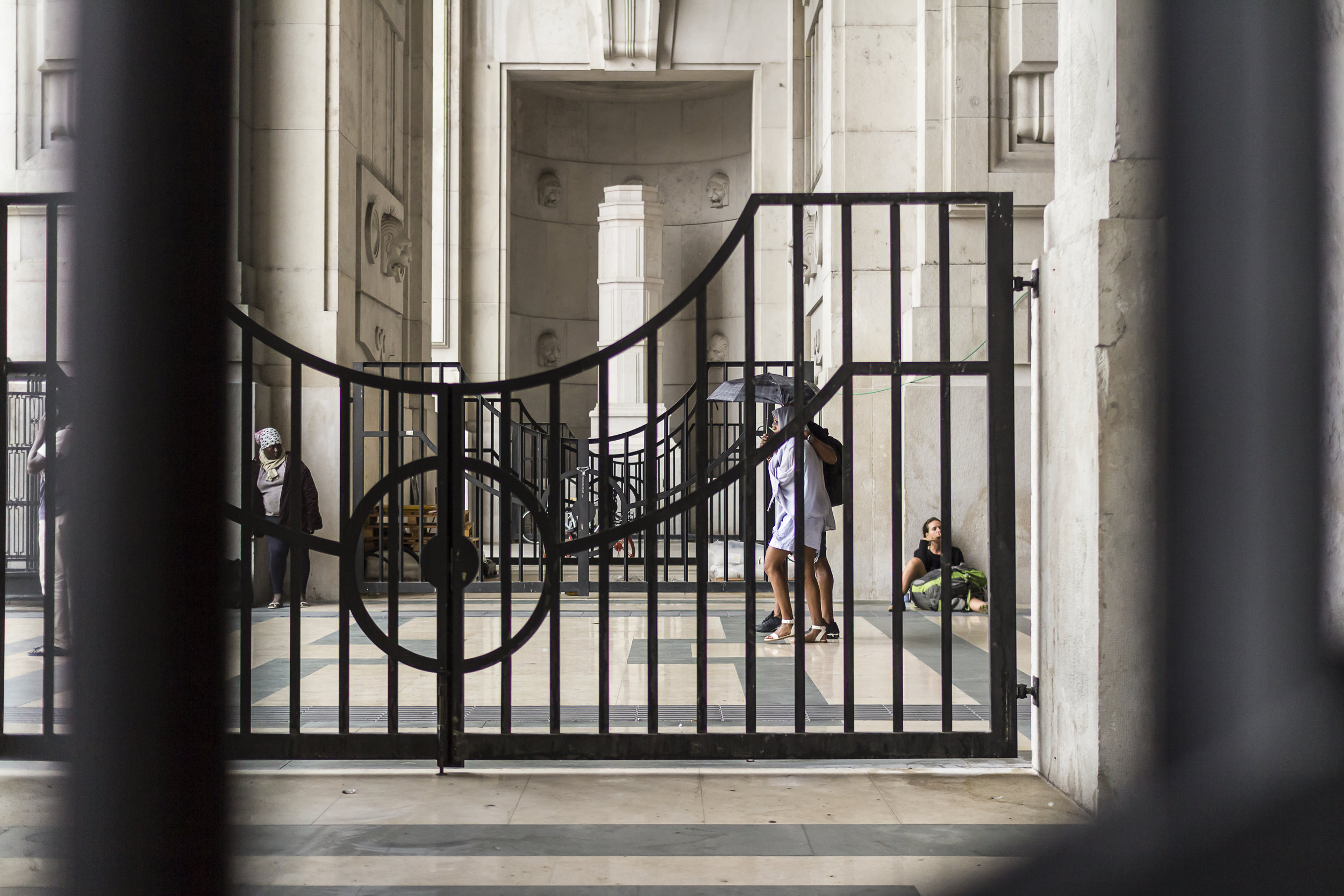Stations ... and stations ... and stations
1 - Mark Guider “Disembark” Burlington, Vermont, December 9th 2012
Like medieval courts: a duke facing a fool, ladies simply sitting and waiting (for what?)
And behind them a captain of the guards watching.
And like the architecture of Antonio Sant'Elia, towers and domes of the new glass Futurism.
Or as the crowd pours on to the London Bridge of T. S. Eliot, that crowd of which Dante said 'yes, long treats, that I would not have believed that so much death had been destroyed'.
The stations are now in time, all the time and beyond, they have inherited it and foreshadowed it.
The stations also imagine, on that train, there is to whisper, which South American or Indian novel will take place? Convoys similar to the train on the water by Paul Delvaux (sensations, illuminations, visual, now sound percussion).
Nineteen photographers for these epicenters, crossroads, joints, fixed everywhere, in the geographic and physical world: the gestures, first of all, the silhouettes, the postures. And the epigrammatic faces (if Orazio, the simplest of the Latin poets, crossed them, what would he say?)
Stations like immense pavilions of the Vanity Fair (vanitas vanitatum) called life: again, who are they, where do they go, what are they thinking, and what are they dreaming of? Those figures almost asleep.
Stations like spaceships within psychic spaces, the movement that photographs freeze is not still, is only a second of the continuum that is space-time.
And I think with pride also to the black and white stations of our Neo-realism, companies of hungry comedians climbed on the train and went, they went ... again, where? The question you have asked yourself, authors of this impressive exhibition, is perhaps this? ... such and such to your frame that guards us forever ... for memory, affection, agreement.
And supreme nostalgia.
Roberto Agostini
2 - Robert Bannister “Rolling Stock”, Doncaster England 2017
stazioni... e stazioni... e stazioni
Come le corti medievali: si fronteggiano un duca e un buffone, delle dame semplicemente sedute in attesa (di che cosa?).
E dietro loro un capitano delle guardie che sorveglia.
E come le architetture di Antonio Sant'Elia, torri e cupole del nuovo Futurismo di vetro.
O come si riversa sul London Bridge di T. S. Eliot, la folla di cui Dante diceva “sì lunga tratta, che non avrei creduto che morte tanta n'avesse disfatta”.
Le stazioni sono ormai nel tempo, tutto il tempo e oltre, l'hanno ereditato e lo prefigurano.
Le stazioni anche immaginano, su quel treno, c'è da bisbigliare, quale romanzo sudamericano o indiano avverrà? Convoglio uguale al treno sull'acqua di Paul Delvaux (sensazioni, illuminazioni, visive, ormai sonore percussioni).
Diciannove fotografi per questi epicentri, crocicchi, snodi, fissati in ogni dove, nel mondo geografico e fisico: i gesti, prima di tutto, le siluette, le posture. E i volti epigrammatici (se Orazio, il più semplice dei poeti latini, li incrociasse, cosa ne direbbe?)
Stazioni come immensi padiglioni della fiera delle vanità (vanitas vanitatum) che si dice vita: di nuovo, chi sono, dove vanno, cosa stanno pensando, e cosa sognano, quelle figure quasi addormentate?
Stazioni come navicelle entro spazi psichici, il movimento che le fotografie congelano, non è fermo, è solo un secondo del continuum che è spazio-temporale.
E penso con orgoglio anche alle stazioncine in bianco e nero del nostro Neorealismo, compagnie di comici affamati salivano in treno e andavano, andavano... ancora, dove? La domanda che vi siete fatti, o autori di questa impressionante mostra, non è questa? ... tale e quale al vostro fotogramma che ci custodisce per sempre... per memoria, affetto, consonanza.
E suprema nostalgia.
Roberto Agostini
21 - Batsceba Hardy “Una notte” Roma, November 27 th 2017
42 - Gerri McLaughlin “Across The Lonely Sea” III Bahnhof SBB, Basel, 2013-2018









































